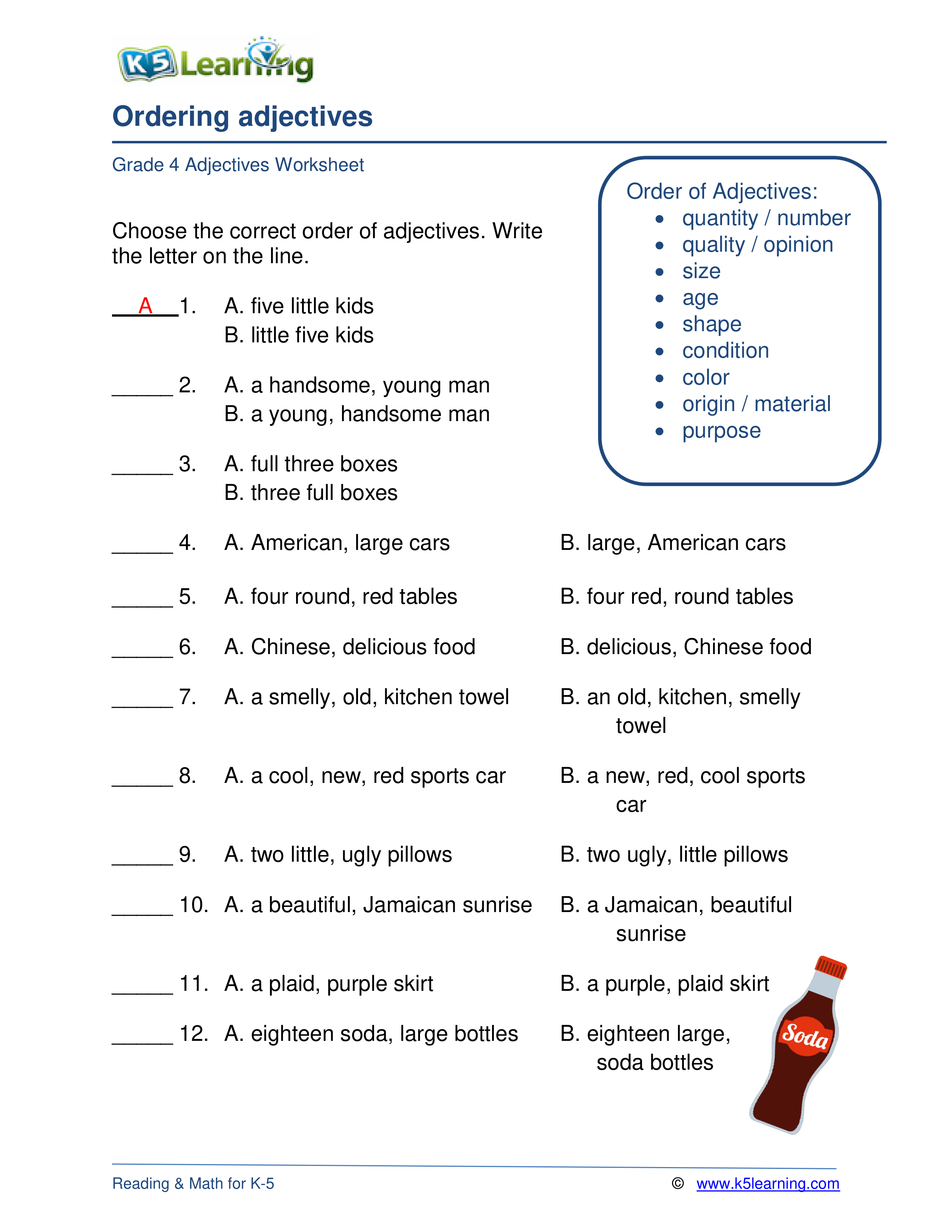Conjunctive Adverbs Worksheet Ks2 – Adverbs are used to describe verbs. Adverbs are used to show the time, place and manner in which something was done. They are typically placed following any verb, adjective, or adjective they alter.
Here are some other examples.
He ran quickly.
She sang wonderfully.
They are able to communicate fluently in English.
There are a variety of ways to create adverbs. There are many methods to make adjectives, as you observe. You can observe that various words can be combined to make different kinds of adverbs.
He drives slowly.
He arrived at the right time.
Adverbs are often used in the beginning and at the at the end of sentences. The place of the adjective is dependent on the purpose for which it was created.
As you can see, adverbs to modify verbs typically follow the verb. Adverbs that modify adjectives as well as other adjectivals should be put behind the adjective or modifier that they modify.
For example:
He is a very slow driver. (incorrect)
He is a slow-moving driver. (correct)
He drives slowly. (correct)
They showed up quickly. (correct)
They came very fast. (incorrect)
Let’s discuss adverbs. These worksheets can help you practice using adverbs in sentences. The worksheets are divided into three parts: understanding and using adjverbs and making adverbs.
The first step is to read a few sentences and find the adjectives. This first section will help you recognize adverbs. The second section, Adverbs: Practice, will show you how to use adverbs as adjectives and verbs. The third section will guide you on how to convert adjectives to adverbs.
What are you waiting for? Grab a pencil and start these adverb worksheets.
Adverb Worksheets Types and Uses
Adverbs can be described as adjectives which can be a verb, adjective, or another word. Adverbs can be used to identify the time, place, and why it was done. Adverbs are typically put after a specific verb.
He walked slowly through the room.
The majority of adjectives can be created by adding -ly to an adjective.
Adjective Slow
Adverb: slowly
Adjective: quick
Adverb: quickly
Adjective: hard
Adverb: Hard
An adverb can be a multi-word or one-word adverb. A one-word adjective can be described as the form with -ly.
He slowly moved around the room.
Multi-word adverbs are composed of many words, for example:
He moved slowly through the room.
Here are some of the most common multi-word adverbs:
adverb + adverb: quite slowly, extremely quickly
Adverb + adjective Very hot, very cool
Preposition + adverb = Without delay, in the front
There is a choice of two kinds.
1. Adverbs that define a manner
The adverbs of fashion inform us how something is done. Think about this:
He slowly moved through the room.
This sentence slowly reveals how he moved.
These are just two examples of adjectives that describe the way in which things happen.
You can speak loudly or quickly.
2. Place-related Adverbs
Place adverbs refer to the location in which something was done. Take this example as an example:
He moved about the space.
The adverb used in the sentence below tells us where he was.
These are just a few examples of place adjectives:
Outside the front door, upstairs, downstairs and nowhere other than that
Adverbs can also define frequency and time. Adverbs that refer to the time of an event, for example “when something has been done” are also available.
He walked slowly through every room.
The sentence in question uses the word adverb slow.
Adverb Worksheets: Tips and Tricks
Adverbs are words that modify the meaning of a verb or adjectives. These worksheets can help you educate your students on the various ways in which adverbs can be employed. These are some tips and tricks that choice support you obtain the most out of your adverb worksheets.
1. A variety of sentences can be made use of.
Adverbs can be used in a variety of sentence types. It is best to play around with it and use it with the worksheets you have created. Simple sentences can be paired with complex sentences, and even questions. This will allow students to understand the different uses of adverbs.
2. Highlight using the adjectival
When you create worksheets, be sure you highlight the adverbs within each sentence. This will help to identify the adverbs for your students. You can highlight all the Adverbs in one color or choose a different color to symbolize each sentence.
3. Instruct your children to create their own sentences.
Your students must not only complete their worksheets but also compose sentences using adjectives. They will be able to better understand the use of adverbs when writing.
FAQs: Adverb Worksheets
1. What are adverbs?
An adverb is a word that describes a verb, an adjective or another term. Adverbs are utilized to identify when and where something happens. These often end in the word -ly.
2. What are the most common four types of adverbs you can employ?
There are four types.
3. What are some examples of adverbs I can use in my writing
Adverbs are used to describe both verbs (and adjectives). Adverbs can create writing that is more engaging and descriptive.
4. What are some popular expressions that you can use to describe Adverbs?
Common adverbs are: quickly slow, but slowly; poorly, well; hard, soft, both in the early and later not always, but occasionally, and frequently.






